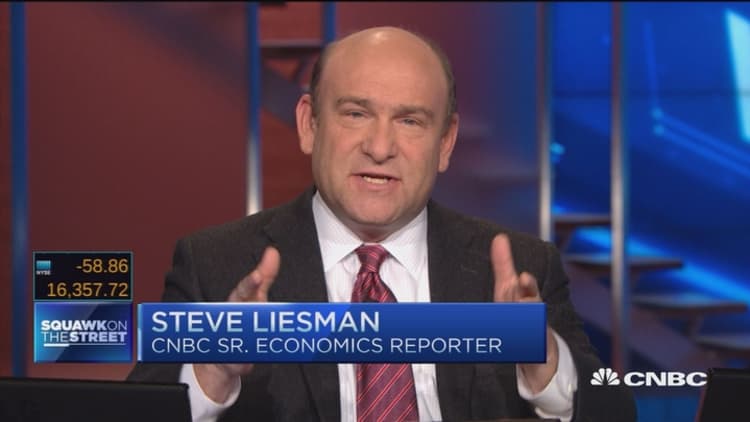
Hiring slowed substantially in January, but the fact that more people were working for higher pay signals strength in the labor market and dashes a little of the recent pessimism about the economy.
Nonfarm payrolls rose by just 151,000, far short of the expected 190,000. The strong 292,000 gain in December was also reduced by 30,000 workers. But the unemployment rate fell to 4.9 percent, from 5 percent, as more people joined the work force. That shows up in the participation rate, which rose slightly to 62.7 form 62.6 percent. Another highlight of the report was the 0.5 percent increase in average hourly wages, or a 2.5 percent gain year over year.
"I think it's a good number despite the headline. I think it raises more questions than it answers. If it was a weak number, people would say it fits into the narrative of the last few weeks. I think this number changes the narrative," said Jim Caron, fixed income portfolio manager with Morgan Stanley Investment Management.
In the past week, ISM's services sector data showed a slowdown in growth in that key area of the economy, and unemployment claims have been rising slightly. Productivity also fell unexpectedly in the fourth quarter. While first quarter growth is expected to pick up, GDP growth was only 0.7 percent in the fourth quarter.
The slowdown in services growth was worrisome, given that the manufacturing sector has been in recession.
Read MoreUgh! Job growth is slowing now, too
This sluggishness, along with turbulence in financial markets and a steep decline in oil prices, has shaken confidence in the economy and has made it less likely the Fed will be able to raise rates.
"What it's telling us is that the underpinnings of the economy, the labor market in particular, is still pretty strong despite all the craziness that took place in January," said Caron. "You're going to have easy policy with the data starting to improve and the Fed not getting in its way."
Stocks were sharply lower Friday, while Treasury yields moved higher, particularly at the short end.
The 2-year note, sensitive to Fed policy, rose to 0.75 percent. The market also priced in slightly higher odds of a Fed rate hike for the year, but there was still only a 15 percent chance of a hike in March, according to RBS data.
Read MoreBut what's the real unemployment rate?
"I don't think this is definitive enough to sway things. This is not a Fed determining number," said David Ader, head of Treasury strategy at CRT Capital. "For the moment, it stalls pessimism."
Now markets will focus on Fed Chair Janet Yellen's testimony before Congress next week. This week, New York Fed President Bill Dudley said the Fed would take into consideration the worsening of financial conditions since it hiked rates in December.
Read More Fed's Dudley warns conditions are tightening
Mark Zandi, chief economist at Moody's Analytics, said the report was influenced by weather and seasonal factors but he described it as "unambiguously good."
"The reality is the average of the last two reports is 200,000 and that's what we've been getting for the last two years. I don't think job growth has changed, and we got really good news on unemployment. It declined with an increase in participation and labor force growth — which is all very good, and we got an increase in hours worked. ... That's not the sign of a labor market that is struggling."
Zandi said the increase in average hourly earnings was very important. "We were at 2 percent for the growth in wages for most of the recovery, and we're now at 2.5 percent and accelerating. This is a good report. I don't see this as a dark hue," he said. "It's a bit of a relief given all the things that are going on in financial markets. You would think business would have gotten a little more cautious but I don't see that in the employment report."
Read More Fed's Mester: 'Gradual' rate hikes to continue
Zandi said the Fed would also take solace from the report. "I don't see how they can tighten again until they have a clear sense of whether there is any damage to the economy from the financial markets, and you don't know that yet," he said.


